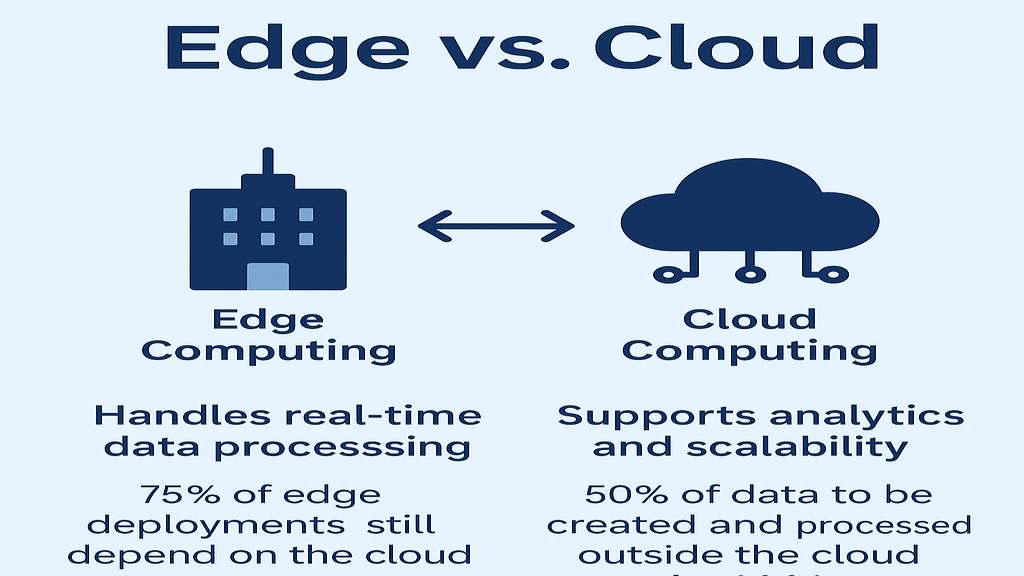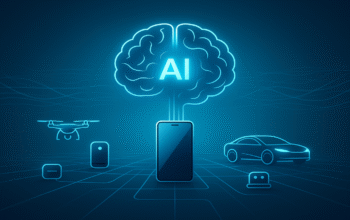Every day, edge devices become smarter and more capable. These operate closer to the users and handle tasks that were once exclusive to large data centers. Think of smart cameras, IoT sensors, and autonomous vehicles. But behind their growing intelligence lies an essential backbone: advanced operating systems (OS).
In this blog, let’s explore how these operating systems will shape the future of edge computing. Let’s dive into their features, challenges, and the reasons why they are critical to the next generation of edge devices.
Covered Contents
ToggleWhat makes Edge Devices Smarter?
Edge devices need to process data in real time locally. For this, they require:
Low Latency:
Tasks like facial recognition or anomaly detection must happen within milliseconds.
Example: A surveillance camera employing real-time video analysis to detect unauthorized access.
High Efficiency:
Edge devices are usually power and computing resource-constrained.
Example: IoT sensors in smart agriculture conserving battery life while processing soil data.
Enhanced Security:
These devices operate in open environments, making them vulnerable to attacks.
Example: A smart lock using encrypted communication to prevent hacking.
An advanced operating system is a bridge that ensures such devices perform seamlessly under such constraints.
Popular Advanced Operating Systems for Edge Devices
Several operating systems are specifically designed for edge computing. Let’s discuss popular operating systems:
Ubuntu Core:
A minimal version of Ubuntu designed for IoT and edge devices. It
offers strong security features like transactional updates and snaps.
Example: Used in smart home hubs to securely manage connected devices.
AWS IoT Greengrass:
Enables edge devices to act locally on data while staying connected to the cloud.
Supports machine learning model deployment and real-time processing.
Example: Used in predictive maintenance for factory equipment.
Azure IoT Edge:
Developed by Microsoft, it focuses on seamless integration with cloud services.
It comes with containerized modules for flexibility.
Example: Deployed in retail to optimize inventory management.
Zephyr OS:
Open-source, real-time OS designed for small devices.
Supports multi-threading and minimal resource usage.
Example: Used in wearable health monitors for continuous tracking.
Google’s Edge TPU OS:
Designed to work with Google’s specialized Edge TPU hardware.
Optimized for running ML models efficiently.
Example: Deployed in smart cameras for object detection in real-time.
Yocto Project:
A flexible and customizable OS tailored for embedded systems. It helps developers create lightweight Linux distributions for edge devices.
Example: Used in autonomous vehicles in processing sensor data locally.
Features of Advanced Operating Systems for Edge
Modern operating systems, especially designed for edge devices, are not like your standard desktop OS. They are tailor-made to suit specific needs:
Lightweight Architecture:
Edge devices have limited storage and RAM.
Example: A fitness tracker running a minimal OS to save memory and battery life.
Real-Time Processing:
Many edge devices execute time-sensitive workloads, such as controlling a robotic arm or video feeds being captured in real time.
Example: Industrial robots, using a real-time OS to assemble parts with precision.
Scalability:
The OS must scale from small IoT sensors to powerful edge servers.
Example: A smart city traffic management system that scales from the intersection to citywide operations.
Security Features:
Built-in encryption, authentication, and secure boot processes.
Example: Medical devices that maintain patient data confidentiality.
Artificial Intelligence and Data-Driven Support:
Integration with AI frameworks to process models locally on the device.
Example: Drone identification objects during a search and rescue mission.
Challenges in Designing Operating Systems for Edge
While advanced OS brings high value, they also suffer from unique challenges:
Resource Constraints:
Balancing features with minimal hardware resources.
Interoperability:
This OS should work across different hardware as well as communication protocols.
Security:
Edge OS should protect data coming from highly distributed networks.
Real-Time Performance:
Workloads at the edge are less predictable.
The Role of AI in Advanced OS
AI is not just a feature, but a game-changer for the operating system at the edge. Here’s how:
Efficient Resource Management:
AI can manage tasks dynamically and utilize hardware with optimal efficiency.
Example: A smart thermostat, learning usage patterns to reduce energy consumption.
Predictive Maintenance:
The OS can predict hardware failures and get them serviced at the right time.
Example: Industrial sensors detecting wear and tear on machinery.
Smarter Security:
AI algorithms can recognize unusual patterns in real time to counter cyberattacks.
Example: An edge gateway that identifies and blocks unauthorized access attempts.
Future of Edge Operating Systems
As the complexity of edge devices increases, so will the operating systems. Here are a few trends to watch:
Increased AI Integration
More AI capabilities will be built into future OS.
Greater Cloud-Edge Synergy
Hybrid architectures will be the norm; seamless data transfer between edge and cloud will be supported.
Enhanced Energy Efficiency
Power consumption will be kept at a minimum without performance compromises.
Support for 5G Networks
Operating systems will be optimized to take advantage of the speed and low latency of 5G.
Conclusion
Advanced operating systems are unsung heroes of smarter edge devices. They power everything from IoT sensors to autonomous vehicles, making real-time processing and decision-making possible. As these systems evolve, they will unlock even more possibilities for industries and consumers alike.
Want to stay updated on innovative technology? Keep following Universal Idealogy for the latest insights!



